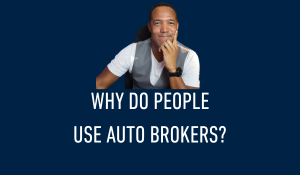What to Look for When Buying a Used Car
Buying a used car can be one of the smartest financial moves you make — if you know what to look for. With the right checklist and a little extra diligence, you can avoid the common traps, overpaying, or worse — ending up with a vehicle that costs you thousands in repairs.
In this guide, I’ll walk you through a pro-level used car checklist so you can shop with confidence.
Step 1: Identify Your Needs Before Your Wants
Before you even browse listings, take a few minutes to ask yourself:
-
How many people will you regularly transport?
-
What is the vehicle’s primary purpose?
-
What kind of fuel economy do you need?
It’s important to match your lifestyle with your purchase. For example, if you're looking at third-row SUVs and towing a camper, you're not likely to get stellar gas mileage. Make a list of non-negotiables and nice-to-haves — this will help narrow your search.
Step 2: Do Your Research
Start with trusted platforms like CarGurus, AutoTrader, or even Facebook Marketplace. Look at:
-
Price vs. mileage
-
Trim packages and features
-
Market comparisons
Be aware that two cars may look identical but be priced very differently depending on features like heated seats, navigation, or all-wheel drive. Not every vehicle will be equipped the same — even within the same model.
Step 3: Check the Vehicle History Report
A clean Carfax or AutoCheck is not a green light — but a bad one is definitely a red flag. Use these reports to:
-
Eliminate vehicles with reported accidents or title issues
-
Check for ownership history (multiple owners in a short time can be suspicious)
-
Watch for branded titles like salvage, flood, or rebuilt
Remember: "Trust but verify." Always follow up with a licensed mechanic, even if the history report looks good.
Step 4: Inspect Like a Pro
Before the test drive:
-
Examine panel gaps (uneven spacing can signal previous bodywork)
-
Check for paint mismatches
-
Look under the hood for fluid levels and leaks
-
Use your nose — burnt smells could mean oil leaks or other issues
During the test drive:
-
Roll the windows up, turn the radio off, and listen to the engine
-
Get the RPMs over 2500 and feel how the car drives
-
Check every button, power seat, and window
Step 5: Watch for Title and Transaction Red Flags
Avoid:
-
“As-is” sales without verified title history
-
Salvaged or rebuilt titles
-
Vehicles with unrealistically low prices
-
Pressure to buy immediately
If it feels too good to be true — it probably is. Use a bank or trusted third party to verify title documents and hold funds in escrow if needed.
Final Thoughts
Buying a used car can absolutely save you thousands of dollars — but only if you slow down and do it right. From identifying your needs, verifying vehicle condition, and inspecting paperwork, a little caution goes a long way.
If you need help with a used car purchase or want a second opinion, I’m here for you. Let’s make sure your next car is a smart one.
– Ronnie Haskins

.webp)
.webp)
